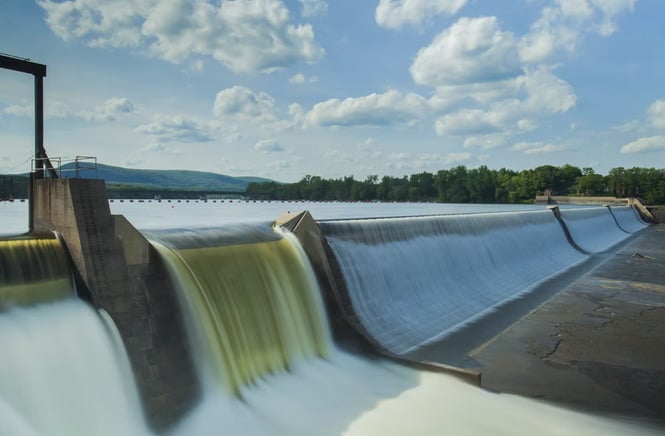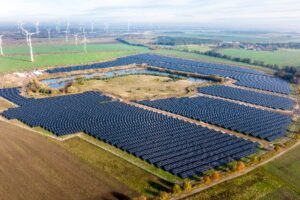What is Hydropower and How Does it Work?

Finding a much more reliable source of power compared to fossil fuels has become imperative nowadays because fossil fuels happen to be a non-renewable source of energy and are depleting at an alarming rate.
This pursuit of a better solution has steered mankind towards hydropower as an efficient energy source that is gaining popularity daily. It has gained the status of one of the most reliable and consistent sources of renewable energy, and there are various hydropower projects across the globe nowadays, while more will continue to develop in the long run.
Hydropower happens to be one of the most convenient and cheapest methods of generating electricity. Therefore, about 60 countries are using it worldwide to meet 50% of their energy requirements. In addition to several benefits, hydropower can also provide clean energy and generate it “as needed.” Moreover, it is presently generating thousands of work opportunities all around the globe. However, if you are not much familiar with hydropower, this is our perfect guide to help you learn all the basics about it.
Understanding Hydropower
To understand hydropower, you must be aware of its power source, and you would be pleasantly surprised that it is generated from natural water sources, including rivers, oceans, and waterfalls. The real intriguing fact is that water is constantly in motion through the global water cycle, and therefore, we can use the movement of water to generate power that will operate any machinery.
As you already know, water is a renewable resource (that means it is as good as an infinite source), and for this very reason, it can be used to generate energy endlessly by recharging the energy generation systems.
Generally, there are different hydropower facilities, and they all happen to be powered by the mere movement of water flowing across. The hydropower plant utilizes generators and turbines to harness the kinetic energy of water and convert it to electricity that is then supplied to the grid stations, and from there, electricity is then supplied to businesses, industries, and houses.
In addition to the generally used power plants for hydropower generation, innovative micro-hydropower technology units can be conveniently used to power businesses or homes in remote areas. Through this technology, even small businesses or independent house owners can have an independent hydropower plant that is used to supply power to a smallholding. The working mechanism is not too different from a general power plant, and it uses water flow and movement to operate small generators and produce ample energy to power a whole house or operate different types of equipment on-site.
How Does It Work?
Hydropower harnesses the energy from the movement of water or water flow through a turbine, which is connected to a generator and then converts that to electricity. Usually, the hydropower plants keep water stored in a dam that is controlled through a valve or gate and the amount of water that is flowing out of the dam is maintained and under strict observation.
If the dam has a greater elevation, the power output through the hydropower plant would be large as well. Areas like Queensland have been using drilling mechanisms, and the options for water drillers Queensland that you can find are said to be one of the methods employed to harness the power of natural water for electricity generation. Although typically, it would need to be stored in a reservoir or dam.
Afterward, as the water starts moving over the dam, according to scientific principles, it is full of potential energy that is later on converted to kinetic energy as water moves downhill. This water movement will then be utilized to turn the turbines that then start generating electricity.
How Do We Use Hydropower?
Since hydropower happens to be a renewable energy source, it utilizes natural resources to generate power and does not result in direct emissions. Thus, it offers a clear and environment-friendly source of energy. This power source is used to supply electricity to businesses, industries, and houses. It may also be used for powering up heavy machinery or mills to grind grains. Presently, if you have the required financing and terrain, the hydropower system is quite easy to set up, and you can start generating electricity through that in no time.
A hydropower plant is not only a reservoir for power generation purposes, but it can also be a great recreational place where people can enjoy various fun activities, like fishing, boating, and swimming. These reservoirs are a great source of water for irrigation and can be used effectively for flood control.
Benefits of Hydropower Generation
As we have already discussed, there are quite a few benefits of this power generation method because it utilizes the energy of a renewable natural source and costs less environmental emissions. Water is not only a consistent and predictable energy source, but hydropower is an efficient, environment-friendly power generation mechanism. It can easily meet the ever-increasing energy demands, and it is responsive as well. These plants have monitored water flow, meaning the plant can produce more or less energy according to the requirement.
The hydropower generators are also more reliable than various other types of electricity generators. For instance, a hydropower generator usually comes with a lifespan of about 100 years, and during that lifetime, it seldom requires maintenance. Hydropower sites are beneficial for small towns because they bring in many job opportunities for the locals, and it simply opens up new growth opportunities for everyone around. The infrastructure around that area and overall quality of life also increase.

Hydropower generators are used to turn the kinetic energy of the falling water into clean electricity, image source: unsplash.com
Still, even with all these benefits and amazing things, hydropower must team up simultaneously with other renewable energy sources with zero emissions like solra, wind, etc.. Since water is a reliable source of energy, it can also supplement the need for wind or solar power systems that often supply electricity on an intermittent basis. If you have been planning to step into the world of hydropower generation, be prepared to know all about it to be able to make well-informed decisions because hydropower is the present and future!







